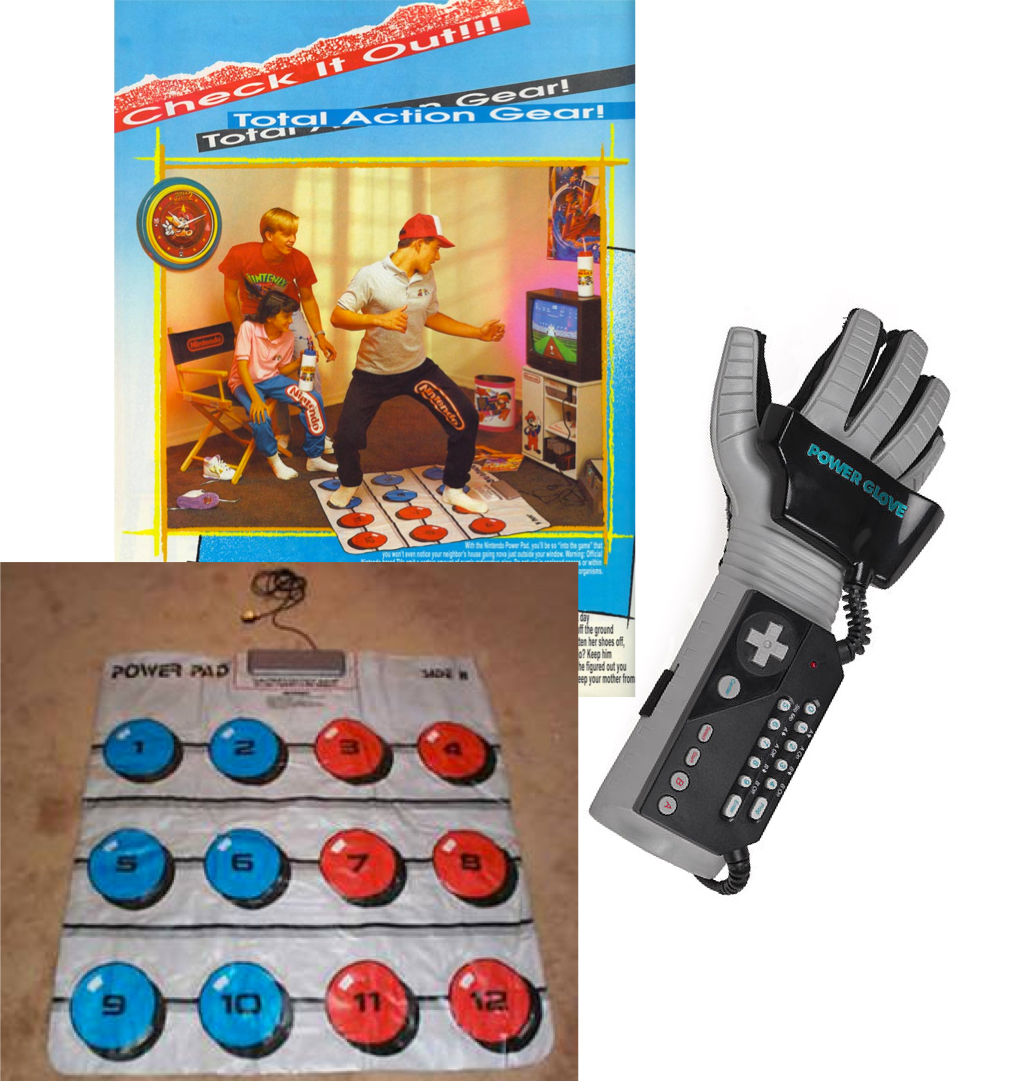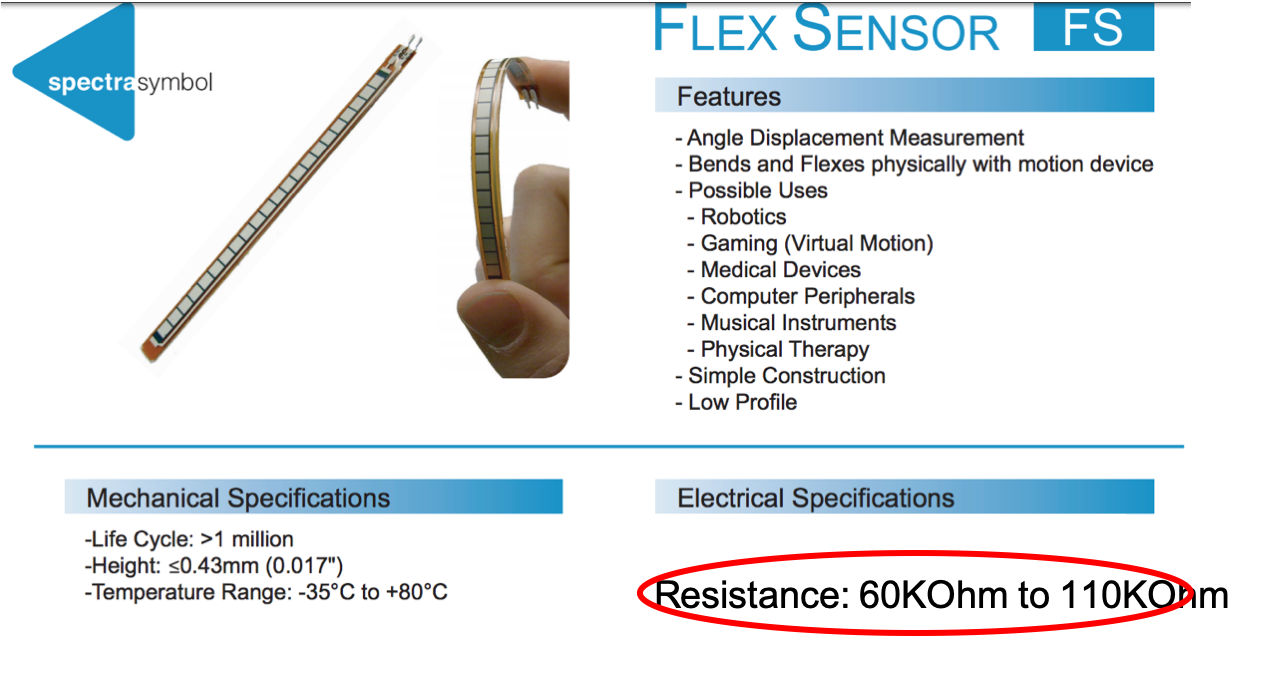If you are a current student, please Log In for full access to the web site.
Note that this link will take you to an external site (https://shimmer.csail.mit.edu) to authenticate, and then you will be redirected back to this page.
1) Starters
In the 1980s, in an effort to make video games more real and get kids moving, Nintendo released some early and very primitive interactive devices to work with its Nintendo Entertainment System (NES). There was the Nintendo "PowerPad" which was comprised of pressure-sensitive switches in an array that was designed to get kids exercising. The idea was you'd do things like run in place to compete against Nintendo track stars and other things. Of course we would just sit in front of it and slap our hands as fast as possible on the thing to beat the levels while we drank sugary sodas.
There was also the PowerGlove which was an early attempt at VR. The thing was a sensor-laden glove that could detect hand orientation and finger position. It didnt' work that well and the game support for the thing was pretty limited so it never took off.

The power glove used a fiber-optic-based sensor to detect finger bending with a resolution of 8 bits. An alternative sensor for this purpose could have been a flex-resistor, which is a two-terminal device with a resistance that varies with flexing. Consider the flex resistor below:

0.005295250320924261
Let's integrate this flex resistor into a voltage divider like from Ex02. This will let us use the ESP32 to make measurements off of it. You may assume the resistance of the flex resistor varies linearly from 60 kiloOhms to 110 kiloOhms as you bend the sensor from 0 degrees to 90 degrees, respectively.
Let's set v_{in} to be 3.3V and the resistor R_b to be 54 KiloOhms. You should also assume that the ESP32 is making the measurement using a Full Scale of 3.3V with 12 bits.

Ignoring the obvious non-linearity that will arise over the measurement range, what is the resolution in "bins per degree" that this sensor can detect? In other words, for each analog reading sample made by the ESP32 how many unique values per degree will we expect to see on average (this number does not need to a be a whole number).
Approximately how much of a degree is the least-significant-bit worth?